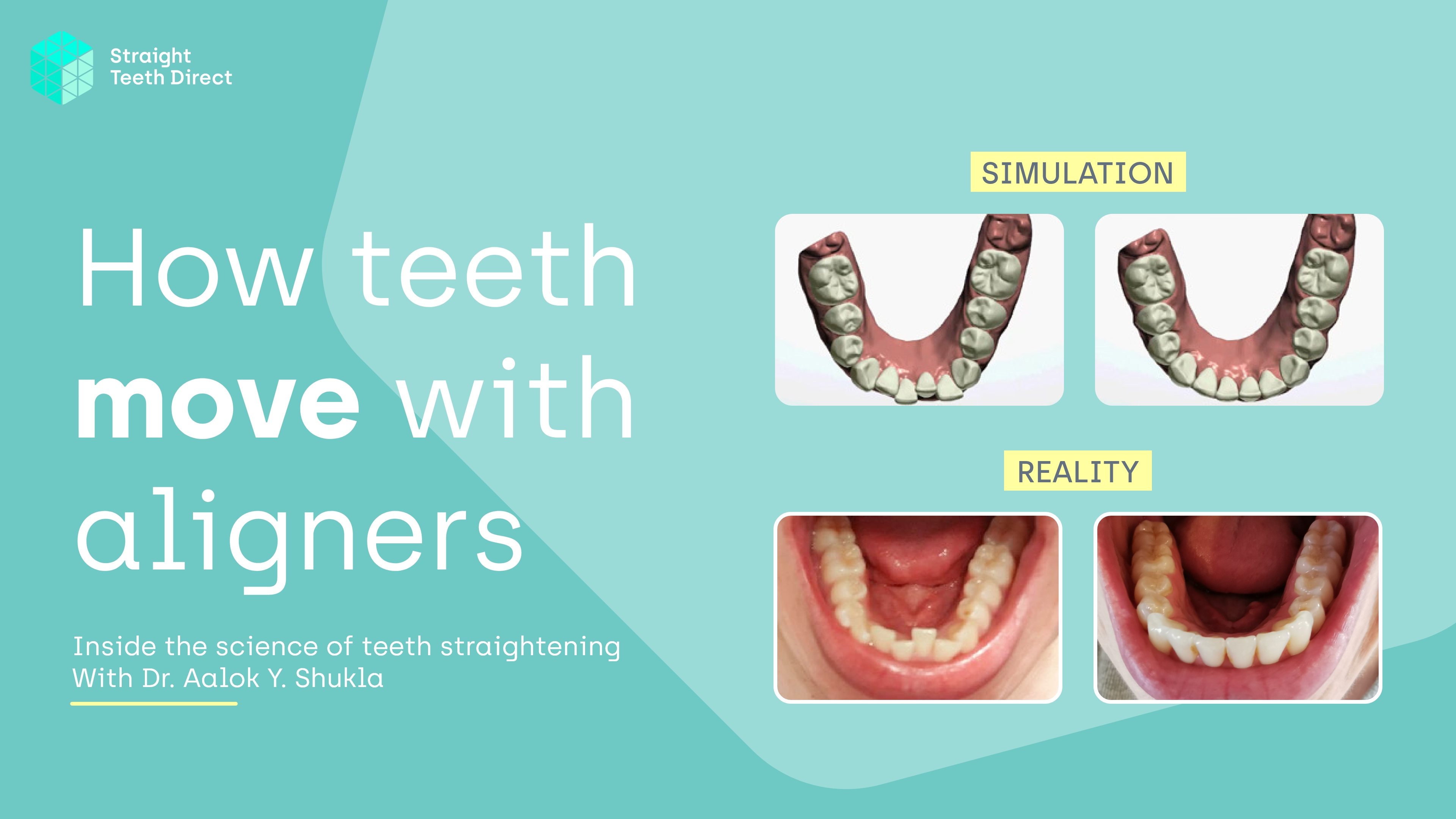
How aligners move teeth: The science behind clear aligner treatment

In this episode of our recent series on the science of teeth straightening, our CEO and co-founder Dr Aalok Y. Shukla shares an expert explanation of how aligners move teeth.
Prefer to sit back and watch? Watch the video below and learn everything you need to know, without any of the hassles.
The history of aligners
In order to understand the science of orthodontics, it’s important to know that teeth straightening is not new – in fact, it dates back to ancient times.
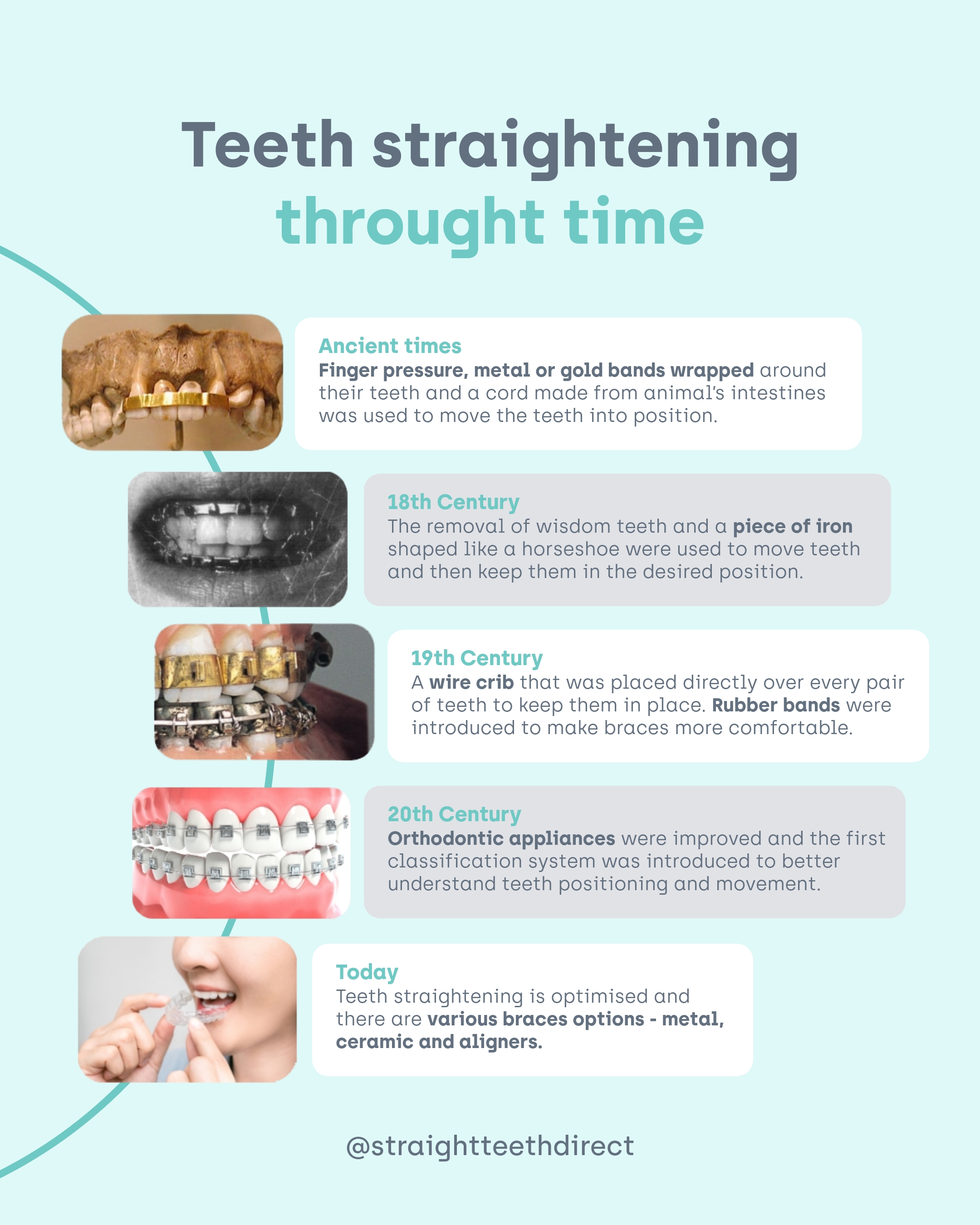
Orthodontists in ancient Egypt knew that enough constant pressure would result in tooth movement. Among other techniques, finger pressure on individual teeth was used to change their position as desired. This technique, though impractical, demonstrates the core physics and biology of tooth movement: consistent pressure causes it. All forms of braces use targeted forces to align your teeth, whether they’re fixed metal braces or invisible aligners.
How aligners work to move your teeth
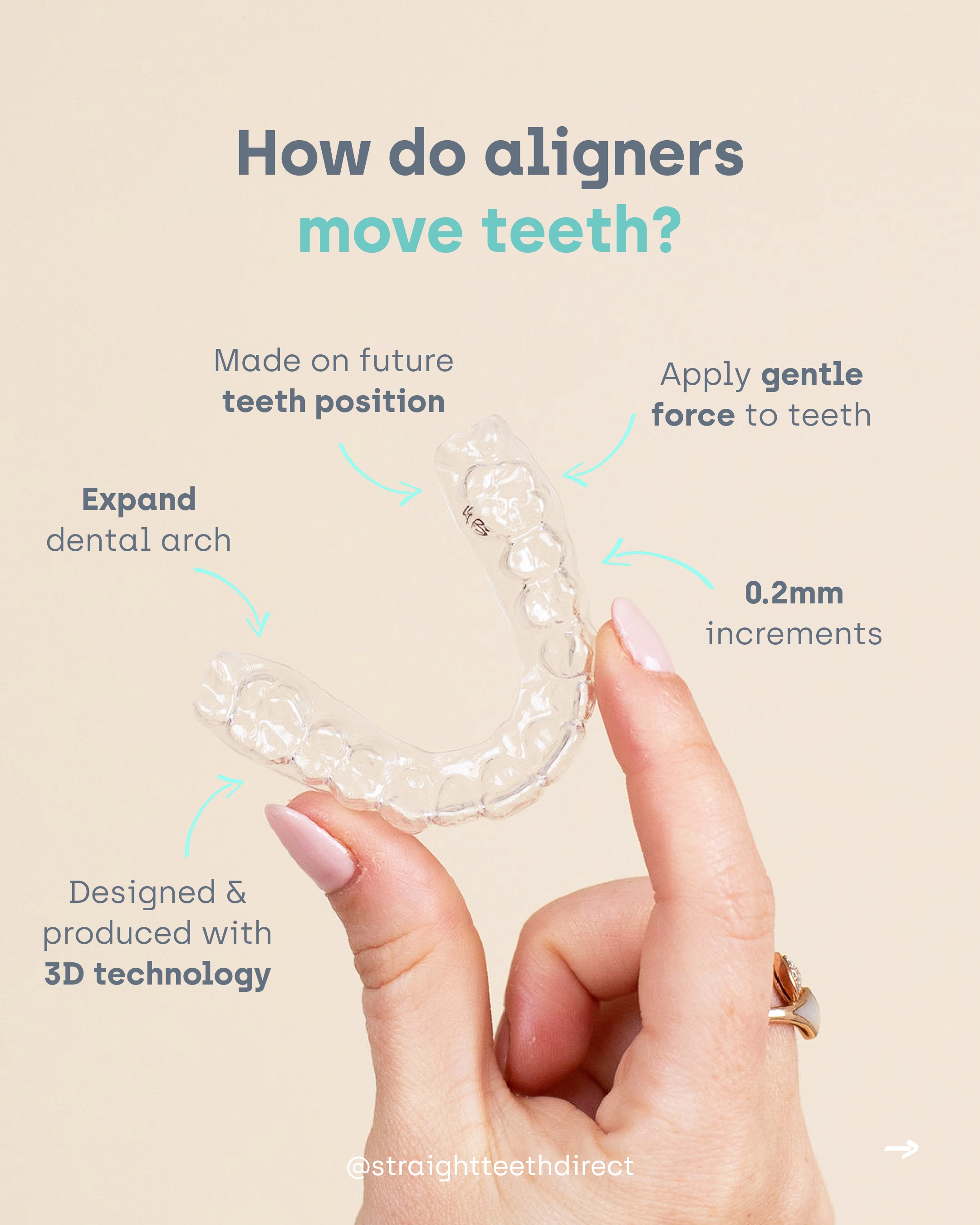
To better understand how aligners work, imagine them working like a cartoon animation. Animations are just a sequence of still images (frames) played rapidly in sequence. A moving image is actually made up of many individual frames that differ from each other ever so slightly, creating movement when played one after another.
Each aligner acts as a specific frame that achieves a particular position, only about 0.2mm different from the previous one. Aligners don’t just copy your current tooth position; they’re made from BPA-free plastic, heated and vacuum-pressed over a 3D-printed model of your next tooth position.
By making these gradual changes over time (typically 6-9 months), your teeth will eventually transform into the smile you desire. So let’s get excited about your smile journey!
The future (…and present) of clear aligners
- Accessibility: teledentistry has made orthodontic treatment more accessible than ever before. Patients can now straighten their teeth at home using clear aligners available through a smartphone app. Our modern approach to orthodontic treatment eliminates in-person appointments, making it easier to achieve your desired smile.
- Cost: just as a home computer was once the sole domain of the rich, braces used to be too expensive for the regular patient who really wanted straight teeth. If most people now have a computer why not make teeth straightening accessible too? Braces are no longer monopolised by high, unaffordable prices, as reducing the visits to the dentist helped us reduce dramatically the costs involved in straightening teeth.
- Accuracy: it is now possible to make accurate models of your teeth from the dental impressions you send us – all this with the aid of a high-end 3D printer. Instead of the old-fashioned plaster cast model we once had to rely on, the dentist now has a perfect digital model of your teeth from which he can develop a comprehensive treatment plan. High-quality models provide accurate and detailed predictions of tooth movement and how they’ll look after braces.
- Environmentally friendly: our aligners are made of the most see-through BPA-free plastic materials and ARE recyclable provided they are clean and uncontaminated. Compared to cheaper materials used by other brands, our high-performing engineering materials offer superior stress retention and crack resistance.
- Teledentistry & aligners do work! Proof of tried and tested aligners has been available to dentists for the past fifteen years. Extensive evidence has proven that they gently and safely move your teeth without any associated risks. With teledentistry we can make a full diagnosis, confirming your teeth are healthy before starting an aligner treatment under the supervision of a dentist.
Are Straight Teeth Direct aligners hard or soft?
Let’s face it – when it comes to straightening teeth, the traditional methods haven’t always been the most comfortable. Uncomfortable train-track braces can cause irritation to your gums and tongue, and can even trap food.
At Straight Teeth Direct, we believe that you can expect a certain level of discomfort during the teeth straightening process. Our unique A and B aligner system ensures comfortable treatment by completing each movement stage.
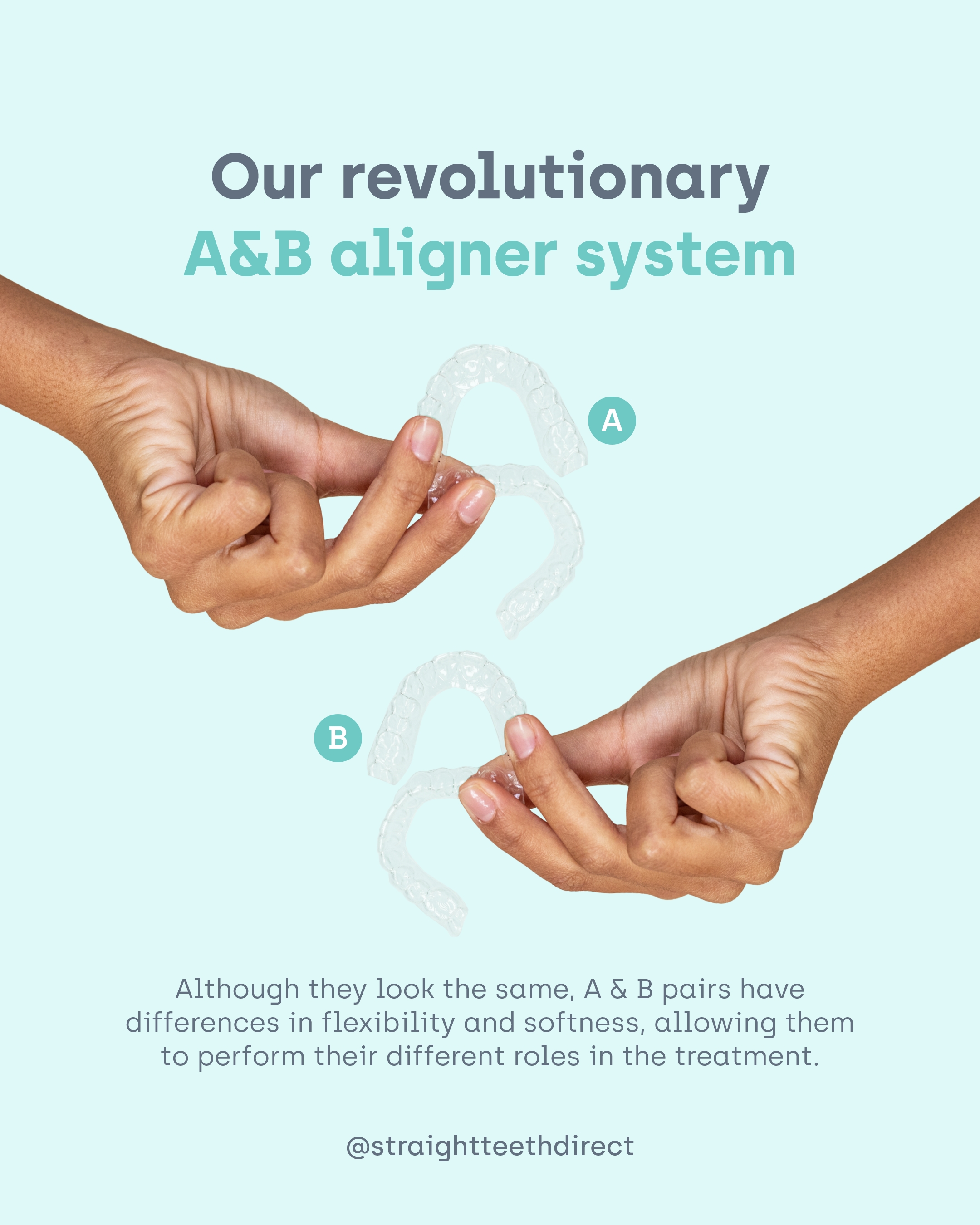
- A aligners: these are the more flexible of the two and help initiate movement
- B aligners: complete each movement stage by helping your teeth and surrounding tissues develop support in their new position
Why is this so critical? Well, our unique aligner model ensures that teeth move systematically and with care. Large, sudden movements can be dangerous and may result in broken wires when using fixed braces, which can lead to other worse dental issues. We utilise soft aligners to ease into the process, taking things one step at a time, ensuring safe movement for both you and your teeth. As you progress, the more rigid B aligners stabilize teeth and surrounding tissues before moving to the next stage.
Now, you may be wondering, “If the aligners are so comfortable, how do I know if they’re working?” It’s simple. When you first wear a new set of clear aligners, you should feel some pressure on your teeth, and they may be a bit tricky to put in and remove. But after about two weeks, they should become easier to manage, and you should feel less pressure. This is a clear indication that your teeth have moved, and the aligners are doing their job as intended!
The three phases of teeth straightening with aligners
Aligners work in three phases to move your teeth into their desired position. Think of it as a room makeover: first, you need to clear out the old furniture to create space, then you can start arranging the new furniture, and finally, add the finishing touches to make everything perfect. Similarly, the three phases of teeth straightening with aligners are:
- Expansion: Create space by widening the dental arch so that teeth can align without being in each other’s way.
- Alignment: Move individual teeth to align nicely next to each other in their new positions.
- Fine-tuning: Complete any last small adjustments to give your new, straight smile its finishing touches.
Each phase of teeth straightening with aligners is crucial and builds upon the progress made in the previous phase. With each new set of aligners, your teeth will move a little closer to their final position as you can see here:
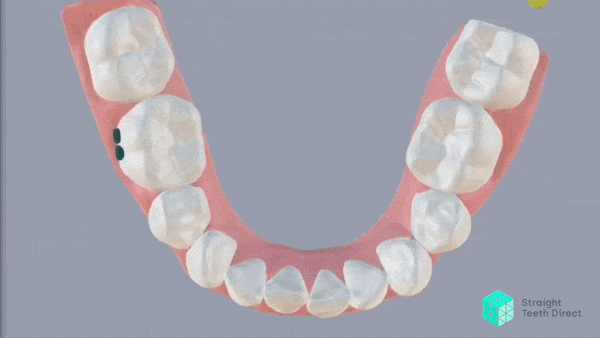
How to keep teeth straight after braces: The importance of retention
Completing your orthodontic treatment and achieving your dream smile is a great achievement per se! However, long-term prevention is crucial to keep your teeth from shifting back after orthodontic treatment. That’s where retention comes in to play a crucial role.
Retention involves wearing retainers to hold your teeth in place and prevent them from moving. Clear braces and retainers share similarities, but retainers differ by fitting over your current tooth position to maintain their place instead of moving them. It’s essential to wear them regularly to ensure your teeth stay put and your smile remains beautiful for years to come. Typically, orthodontists recommend wearing retainers for 22 hours a day during the first two months post-treatment, followed by nightly use for up to a year, and then a few days a week. However, everyone’s case is different. Some people may find that their teeth respond well to stabilisation, while others have more stubborn teeth that tend to move quickly.
It’s also crucial to replace your retainers every once in a while. That’s why we at Straight Teeth Direct offer a Maintainer Plan – a retainer membership with 2 fresh retainers set delivered to you every year. This way, you can rest assured that your smile is protected for life.

Still thinking about it?
Fill in your email to receiveyour free guide!


















